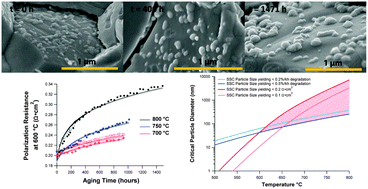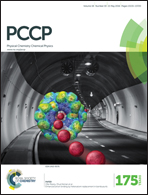Degradation of nano-scale cathodes: a new paradigm for selecting low-temperature solid oxide cell materials†
Abstract
Oxygen electrodes have been able to meet area specific resistance targets for solid oxide cell operating temperatures as low as ∼500 °C, but their stability over expected device operation times of up to 50 000 h is unknown. Achieving good performance at such temperatures requires mixed ionically and electronically-conducting electrodes with nano-scale structure that makes the electrode susceptible to particle coarsening and, as a result, electrode resistance degradation. Here we describe accelerated life testing of nanostructured Sm0.5Sr0.5CoO3–Ce0.9Gd0.1O2 electrodes combining impedance spectroscopy and microstructural evaluation. Measured electrochemical performance degradation is accurately fitted using a coarsening model that is then used to predict cell operating conditions where required performance and long-term stability are both achieved. A new electrode material figure of merit based on both performance and stability metrics is proposed. An implication is that cation diffusion, which determines the coarsening rate, must be considered along with oxygen transport kinetics in the selection of optimal electrode materials.


 Please wait while we load your content...
Please wait while we load your content...